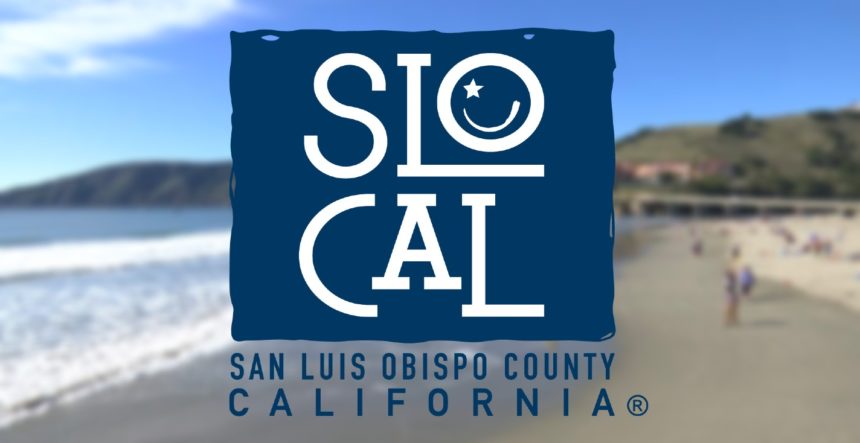SLO County tourism industry going through challenging times, but remaining optimistic about the future

SAN LUIS OBISPO, Calif. -- There's no doubt all parts of the economy are continuing to be negatively impacted by the COVID-19 pandemic.
It's especially true for tourism.
The travel industry has been one of hardest hit business sectors, since tourism has essentially come to a screeching halt over the past two months.
In San Luis Obispo County, it's an industry that is vitally important. It's the second biggest economic driver, trailing only agriculture.
According to Visit SLO CAL, the county's destination marketing and management organization, last year, spending associated with tourism crossed the $2 billion mark for the first time ever.
The amount also represented a 5.4 percent increase from the previous year.
In addition, the travel and hospitality field employs over 23,000 people, representing 12 percent of the entire county workforce.
"Visitor spending in SLO CAL has a direct effect on the quality of life on our residents," said Chuck Davison, Visit SLO CAL President and CEO, while observing National Travel and Tourism Week. "Local tax revenue derived from travel hit $90 million. Those dollars directly support our communities and fund the services we rely on everyday."
With the travel industry such an integral part of the county's economy, it makes the current health crisis even more concerning.
"We've lost a number of employees who aren't able to work anymore because of the shutdown," said Davison. "Businesses are definitely suffering. We've got owners of properties and organizations that are struggling to make their loan payments, and risk losing their business, and so it's a challenging time right now in the county."
While hotels remain open, few people are traveling, particularly due to statewide stay at home orders, health concerns and economic uncertainty.
Davison said hotel occupancy last week was down 77 percent from the same time last year.
As the pandemic continues, county leaders are asking potential travelers to stay away, and are working with industry officials, both locally and outside of the area, to encourage people to refrain from visiting here.
For Visit SLO CAL, the current situation is presenting the organization with a unique challenge; to continue to market the county, yet at the same time, do so while travel is being discouraged here.
"Our typical function is spent in a lot of marketing, but right now, we really shifted that to the management side," said Davison. "Now is not the time to travel. Today is not the time for travel to occur. We hope that will return shortly."
When widespread travel will resume is unknown, but when it does, Visit SLO CAL is making sure San Luis Obispo County will be fresh in people's minds.
"Many of our efforts have been focused on really encouraging to still to dream," said Davison "Everybody is sitting at home. They are looking for something to do. They want to be aspirational about what the future will hold and be optimistic, and so we're putting out a lot of messaging about thinking about the destination, visually and virtually experiencing the destination, dreaming about that next trip back to SLO CAL when they're ready."
Visit SLO CAL recently suspended a $1.6 million advertising campaign to feeder markets during the first week in March and has stopped spending on media.
Instead, it's relying heavily on social media to keep the county engaged with potential visitors.
"We're really focusing on videos and storytelling that really helps them plan for future trips, think about the destination," said Davison. "We launched just a couple of weeks ago, a how-to class series on Wednesday evenings, free on our Facebook page, where we're teaching people how to do things. We had a cocktail crafting class. We had a gelato making class. This week's class is on olive oil, and so it's really encouraging people to experience the destination virtually."
San Luis Obispo County's prime geographic location makes it an ideal place to travel during normal circumstances.
It's located within easy driving distance between two of the nation's populated metropolitan areas, and also just a couple of hours west of the Central Valley, home to millions more.
"We are in the drive market," said Davison. "43 million people in the state of California, who can all travel here by car, don't have to get on a plane."
Once people start to travel again, they may be reluctant to travel too far from their home, and also hesitant to use air travel.
It places San Luis Obispo County in a great position to see tourism bounce back quicker than potentially other locations.
"Those drive markets in Southern California and Northern California are going to be the key to bringing back the economic success of tourism in the near future," said Davison.
Still, a big key to reestablishing a healthy tourism industry is to attract people from further locations too.
"Many of the people that come here, as we know, come from major metropolitan areas, Denver and Dallas," said Davison, noting two major markets now accessible with non-stop flights out of the San Luis Obispo Airport. "We expect air service will return. We expect that return will be very slow and methodical, but we're working in partnership with the airport and our air service consultant to develop a campaign for our air service markets on how to bring them back."
Davison is confident people will return, perhaps it will happen gradually, but after a long and distinguished career in the travel and hospitality industry, he believes it will happen, especially in San Luis Obispo County.
"We remain optimistic about travel bouncing back," said Davison. "It always has. It did after 9/11. It did after the Great Recession. We expect it will here. We need the travel and tourism in San Luis Obispo County in order for our county to thrive."
